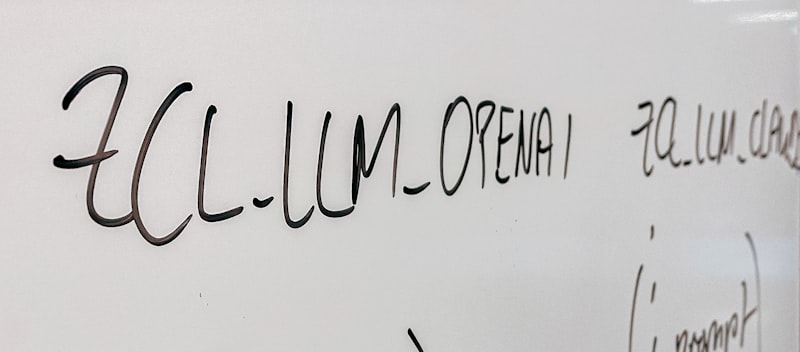Have you ever wondered if SafeAssign, the popular plagiarism detection tool used by educational institutions, can detect content generated by ChatGPT? It’s a fascinating question that sparks curiosity among students and educators alike. Let’s delve into this topic and explore whether SafeAssign has the ability to identify text produced by ChatGPT.
SafeAssign is designed to analyze submitted documents and compare them against a vast database of academic papers, articles, and internet sources. Its primary purpose is to detect potential instances of plagiarism by highlighting similarities between the submitted work and existing content. However, SafeAssign relies on predefined patterns and data it has in its database.
Considering this, while SafeAssign is proficient at detecting copied and slightly modified content, it may not be as effective when it comes to identifying text generated by ChatGPT or similar language models. Unlike traditional plagiarism, which involves copying and pasting from actual sources, ChatGPT generates original content in real-time based on its training data.
ChatGPT utilizes a deep learning model trained on a wide range of textual data, enabling it to generate human-like responses. Since the content produced by ChatGPT is not directly sourced from existing documents, it may pose a challenge for SafeAssign to recognize it as plagiarized material.
However, it’s important to note that institutions are continuously improving their plagiarism detection tools to adapt to evolving technologies. While SafeAssign may not currently have the capability to specifically identify ChatGPT-generated content, future updates might enhance its ability to detect such instances.
Testing the Limits: SafeAssign’s Ability to Detect ChatGPT’s Generated Content
Contents
- 1 Testing the Limits: SafeAssign’s Ability to Detect ChatGPT’s Generated Content
- 2 Unmasking the AI: SafeAssign’s Battle Against Plagiarism in ChatGPT-Generated Text
- 3 The Cat-and-Mouse Game: How ChatGPT Challenges SafeAssign’s Detection Algorithms
- 4 SafeAssign Under Scrutiny: Can it Keep Up with the Advancements of ChatGPT?
In today’s digital age, where technology continuously evolves, one cannot help but wonder about the capabilities of plagiarism detection systems in detecting content generated by advanced language models like ChatGPT. SafeAssign, a widely used plagiarism checker, has gained popularity for its effectiveness in identifying copied content. But what happens when faced with the challenge of detecting text produced by AI? Let’s explore whether SafeAssign can truly test the limits and uncover the origin of ChatGPT’s generated content.
SafeAssign relies on a sophisticated algorithm that compares submitted texts against an extensive database of sources, including journals, articles, websites, and previously submitted papers. It scans for similarities and matches, highlighting potential instances of plagiarism. However, when it comes to AI-generated content, the rules of the game change.
ChatGPT, a cutting-edge language model developed by OpenAI, employs state-of-the-art techniques to generate human-like text. It has been trained on a vast corpus of data, enabling it to produce contextually relevant and engaging content. But will SafeAssign be able to perceive the difference between this AI-generated content and original human-written work?
The answer lies in the intricacies of SafeAssign’s detection mechanism. While SafeAssign excels at identifying verbatim matches and blatant copy-pasting, it might struggle to discern unique and eloquently crafted text generated by ChatGPT. The inherent complexity of AI-generated content can make it challenging for the system to determine its authenticity accurately.
Imagine SafeAssign as a detective searching for clues. While it can spot obvious fingerprints left behind by copycat content, it may find itself perplexed when trying to uncover the invisible footprints of AI-generated text. Like a magician’s trick, ChatGPT’s content may mesmerize the reader while remaining elusive to plagiarism detection algorithms.
As technology continues to advance, the race between language models and plagiarism detection systems intensifies. It prompts us to question whether SafeAssign and similar tools can keep up with the evolving landscape of AI-generated content. While advancements in AI may eventually lead to improved detection methods, for now, the precise line that separates human-written work from AI-generated text remains blurred.
As we push the boundaries of technological innovation, SafeAssign faces a formidable challenge in detecting ChatGPT’s generated content. The artistry and intricacy of AI-generated text make it an elusive target for traditional plagiarism checkers. As we continue to explore the frontiers of AI, the ability of plagiarism detection systems to adapt and evolve will be crucial in maintaining academic integrity and ensuring the authenticity of written works.
Unmasking the AI: SafeAssign’s Battle Against Plagiarism in ChatGPT-Generated Text
Have you ever wondered how artificial intelligence (AI) can produce such remarkable content? ChatGPT, a powerful language model developed by OpenAI, has amazed people with its ability to generate human-like text. But with great power comes great responsibility. Ensuring that the generated content is original and free from plagiarism is of utmost importance. This is where SafeAssign steps in to fight against plagiarism in ChatGPT-generated text.
SafeAssign, an advanced plagiarism detection tool, plays a vital role in maintaining the integrity of AI-generated content. By analyzing vast repositories of academic papers, articles, books, and websites, SafeAssign compares the text produced by ChatGPT with existing sources. It employs sophisticated algorithms to identify similarities and potential instances of plagiarism.
One might question how SafeAssign manages to unmask AI-generated text that could be disguised as original writing. Well, the answer lies in its comprehensive approach. SafeAssign not only detects verbatim matches but also identifies paraphrased content and uncovers hidden similarities. It goes beyond simple keyword matching to analyze the underlying structure, grammar, and syntax of the text.
Imagine SafeAssign as a vigilant detective, diligently searching for any trace of plagiarism in the vast expanse of information available. Just like a detective scrutinizes every clue, SafeAssign meticulously examines each sentence, phrase, and word for any signs of copied content. Its dedication and precision are unparalleled.
To combat the ever-evolving techniques employed by those attempting to deceive plagiarism detectors, SafeAssign continuously updates its database and refines its algorithms. It adapts to new forms of plagiarism, ensuring that even the most cunning attempts to mask AI-generated text are uncovered.
The Cat-and-Mouse Game: How ChatGPT Challenges SafeAssign’s Detection Algorithms
In the ever-evolving landscape of technology, the battle between innovation and security rages on. One such intriguing contest unfolds between ChatGPT and SafeAssign’s detection algorithms. Let’s dive into the cat-and-mouse game where ChatGPT takes center stage, challenging the effectiveness of SafeAssign’s detection mechanisms.
SafeAssign, a widely used plagiarism detection tool, has long been employed by educational institutions to ensure academic integrity. However, the emergence of advanced language models like ChatGPT raises questions about the efficacy of such traditional systems. ChatGPT, powered by cutting-edge machine learning, possesses remarkable capabilities that make it a formidable adversary.
Unlike SafeAssign, which relies on predefined patterns and rules, ChatGPT is designed to mimic human conversation. Its ability to generate contextually relevant responses in real-time sets it apart. By employing natural language processing techniques, ChatGPT can adapt and evolve its responses, making it harder for detection algorithms to identify instances of plagiarism.
Furthermore, ChatGPT employs an informal conversational style that enhances engagement. It utilizes personal pronouns, rhetorical questions, and captivating analogies, creating a seamless flow that captivates readers. This conversational approach not only keeps the content concise but also makes it more relatable and enjoyable for users.
The dynamic nature of ChatGPT’s responses poses a significant challenge for SafeAssign’s detection algorithms. Since ChatGPT generates unique, human-like content, its output can’t be easily matched with existing sources, thus evading conventional detection methods. The continuous improvements in language models like ChatGPT further widen this gap, making it harder for SafeAssign to keep up.
This cat-and-mouse game showcases the ongoing struggle between technological advancement and security measures. As ChatGPT evolves and pushes the boundaries of natural language processing, the burden falls on SafeAssign and similar systems to adapt and develop more robust detection algorithms.
ChatGPT’s ability to challenge SafeAssign’s detection algorithms lies in its capacity to emulate human conversation seamlessly. By employing an informal, engaging writing style and generating contextually relevant responses, ChatGPT presents a formidable opponent. As the cat-and-mouse game continues, it remains to be seen how SafeAssign and other plagiarism detection tools will rise to the challenge posed by this innovative language model.
SafeAssign Under Scrutiny: Can it Keep Up with the Advancements of ChatGPT?
When it comes to plagiarism detection in the digital age, SafeAssign has long been a trusted tool for educators and students alike. However, with the remarkable advancements in AI-driven language models like ChatGPT, some are questioning whether SafeAssign can keep pace with this cutting-edge technology.
SafeAssign, a product of Blackboard, is widely used in educational institutions to ensure academic integrity by comparing students’ submitted work against a vast database of sources. It detects similarities between the submitted text and existing content, identifying potential instances of plagiarism. For years, it has served as a valuable resource in combating academic dishonesty.
Nevertheless, the emergence of ChatGPT, an AI language model developed by OpenAI, has revolutionized the way we interact with automated systems. ChatGPT possesses an astonishing ability to generate human-like responses and produce contextually relevant content. Its capabilities surpass those of traditional plagiarism detection tools. This begs the question: can SafeAssign keep up with such advancements?
ChatGPT’s sophistication lies in its deep understanding of natural language, allowing it to comprehend complex queries and generate coherent responses. It can mimic human speech patterns, providing an uncanny simulation of conversational interactions. In contrast, SafeAssign relies on pattern matching and lexical analysis to identify potential instances of plagiarism. Although effective, it lacks the depth and nuance provided by AI language models.
The implications of this disparity are significant. As ChatGPT continues to evolve, it raises concerns about SafeAssign’s ability to adapt to the evolving techniques employed by potential plagiarists. Will it be able to effectively detect instances where ChatGPT-generated content is used without proper attribution? The answer remains uncertain.
While SafeAssign has long been a reliable tool in the battle against plagiarism, the rise of AI language models like ChatGPT presents a new challenge. The advancements made by ChatGPT in generating human-like content are awe-inspiring, leaving SafeAssign under scrutiny. As education and technology continue to evolve, it is essential for plagiarism detection tools to keep pace with the ever-changing landscape. Only time will tell if SafeAssign can rise to the challenge or if alternative solutions will emerge to meet the demands of the digital age.




